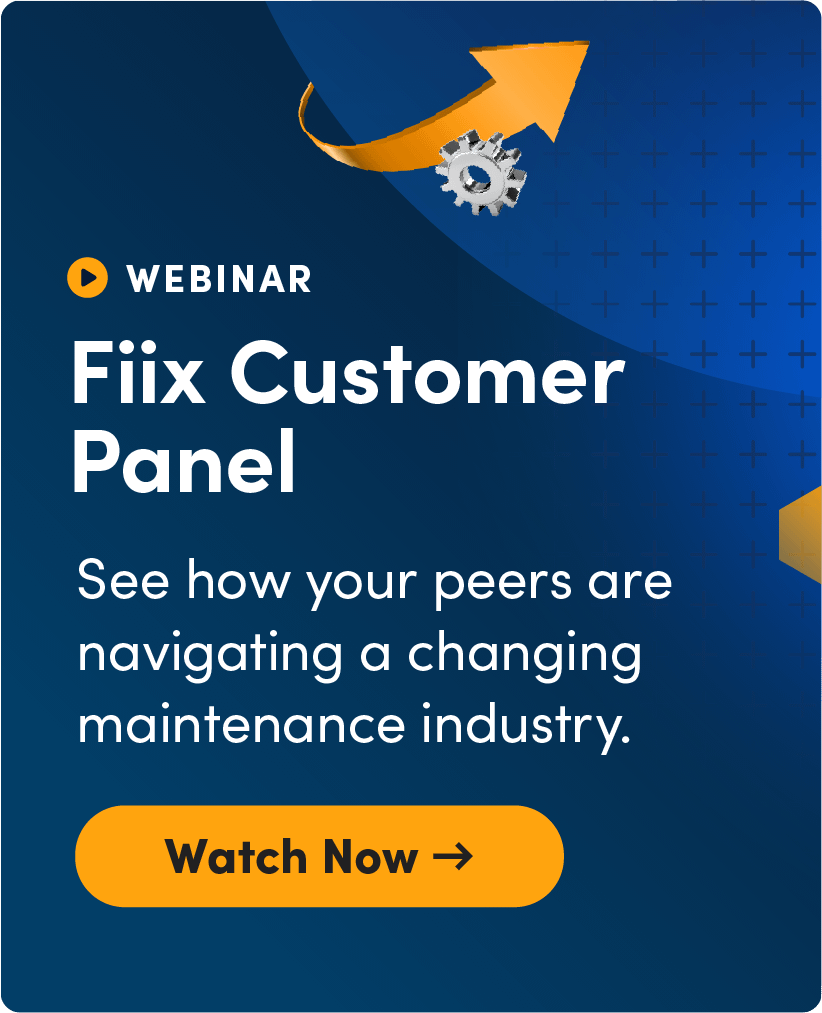Hey fellow Fiixers! I’m Chris, and I’m an Implementation Consultant at Fiix. You can learn more about me and my CMMS experience here in our Welcome & intros thread. During my time here I have noticed a trend among frequently asked questions I get during implementation. So I thought I’d share my findings with all of you.
No two implementations are ever the same as each organization will have different requirements, resources and budgets. What does remain pretty constant is the process which surrounds implementing the system with the only differing feature being the level of planning, resource and detail that is required in line with your business needs. I do tend to focus on maintenance software sectors (CMMS & CAFM) but the questions and answers in a lot of cases are quite generic, as is the implementation process.
FAQ’s on new implementations:
-
How long will it take?
-
How long will it be before we can start using it?
-
What are the cost benefits and how long before I notice the difference?
-
What’s the process for implementation?
-
Should we phase it in or go for the “big bang” approach?
-
When should we introduce the mobile solution?
So, to answer some of those frequently asked questions in more detail and to provide some clarity:
How long will it take? (This is a tricky one to answer as there can be so many variables, each of the bullet points below adds different amount of time)
- The complexity of your business requirements.
- The amount of dedicated resource time available.
- The number of modules/facets to be implemented (e.g. maintenance, stock, purchasing, mobile solution etc.).
- The level of customization or interfaces required (Out of the box vs a more flexible solution)
- Budget (for additional help/guidance, training etc.).
- IT issues or policies, especial in larger organizations (I have experience of this affecting the project length).
How long will it be before we can start using it?
- I have used several out of the box solutions that I have implemented with customers and the reality is that a simple system could be implemented and recording work within the first week. Realistically, that timescale rises when you start adding the requirements for; PPM, Fault Analysis, Meters, Costs etc. Typically, if you are looking to build a system in this fashion and get it up and running quickly then start with Statutory work followed by your Critical plant and then phase in the rest of a period of time, in line with your available resources. Recently, I have helped implement several systems that have gone live with the 1 – 2 months (Maintenance, Work Requesting and Mobile Solution) but it does require the customer to have that dedicated resource available to achieve those timescales!
What are the cost benefits and how long before I notice the difference?
- I do believe that there are genuine savings to be made with improved working efficiencies, labor management, plant availability but I have always found this one difficult to quantify and I can only go by the typical values others have quoted of between 5 -20% savings. What I do say to people is that the information that you have at your disposal now allows you to make sound business decisions rather than speculative ones. You also will have a system that will help in the areas of compliance and due diligence, whether that is proving safe systems of work or the quality of your maintenance regimes to customers, that has a value that is hard to put a figure on! From the moment you start recording data the information becomes valuable, however, it will not be until the system is matured with regard to the quality and quantity of data returned for it to fulfill its full potential - that could take 12 -18 months before it is fully populated and the full benefits are realized.
What’s the process for implementation?
- The diagram below shows a typical process for the implementation of an “out of the box” type system. More complex or larger systems for businesses with more defined requirements allow a higher degree of customization and interfacing to other systems, this may introduce further steps into the process (solution design as well as build & test), as the software vendor will make modifications to the system to fulfill those requirements. The level of detail under each step will be dependent on the complexity of your requirements, with simple systems requiring far less detail at each phase.
Should we phase it in or go for the “big bang” approach?
- In “out of the box” CMMS the systems are more often phased in, this allows those implementing a system for the first time, some leeway with the changes in working practice (culture change). Where the systems are modular in design, then typically they can be implemented a module at a time and even in the simple systems, not all the functionality needs to be implemented within that module for the go live. For me, it is about an evolution of a system rather than a revolution, developing the system over a period of time helps with user acceptance and makes the learning process far easier for the typical user. In the larger systems which impact more areas of an organization, then the business may insist on a “big bang” approach with all facets of the system going live as at the same time. This obviously will make the whole process far more complex and the planning, management and execution even more critical.
Check out Fiix Senior Manager of Implementation Consulting Steve Ricard webinar session from our Fiix Forward conference in 2021.
Where he goes over key lessons learned from over 1000s of Fiix implementations plus shows how to rollout features in a staged approach to achieve the best end result. 👇
When should we introduce the mobile solution?
- As with most systems they now come with some form of a mobile solution and the question of when is the right time to implement is one that now frequently crops up. To be honest I am of the mind that there is no better time than to implement it from the outset, my rationale is based on:
- The ease of training people to use what is now a familiar smart-phone/tablet device and a simplified application rather than the main application.
- There are definite financial savings that can be made by the reduction in administration.
- The quantity and quality of data returned is far greater than you will get from paper-based systems.
- Health and Safety/compliance aspects of a job are often better policed through the mobile solution.
- The end user can gain access to more information in attached documents/drawings or can take/view photographs.
- Data is entered and returned in real time
🛠️ Six key elements to implement a system successfully:
-
Upper management support
-
Clear objectives
-
Planning
-
Dedicated resources
-
Training and education
-
Project management
This is just a sample of the more frequent questions that I get asked, if you have a question not on the list please feel free to leave a comment below and I will do my best to answer it. 👇








